A GATHERING OF SPOONS 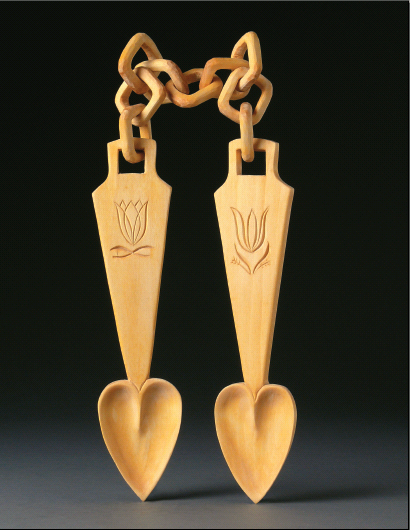 Trygve AndersonTexas2008BasswoodA Gathering of SpoonsThe Design Gallery of the Worlds Most Stunning Wooden Art Spoons by Norman D. Stevens All rights reserved. No part of this book may be reproduced or transmitted in any form or by any means, electronic or mechanical, including photocopying, recording, or by an information storage and retrieval system, without written permission from the publisher. Norman D. Stevens American Association of Woodturners Cover design: James Goold Design and layout: Maura J. Zimmer ISBN: 978-1-610351-43-0 Printed in China 135798642 Linden Publishing titles may be purchased in quantity at special discounts for educational, business, or promotional use.
Trygve AndersonTexas2008BasswoodA Gathering of SpoonsThe Design Gallery of the Worlds Most Stunning Wooden Art Spoons by Norman D. Stevens All rights reserved. No part of this book may be reproduced or transmitted in any form or by any means, electronic or mechanical, including photocopying, recording, or by an information storage and retrieval system, without written permission from the publisher. Norman D. Stevens American Association of Woodturners Cover design: James Goold Design and layout: Maura J. Zimmer ISBN: 978-1-610351-43-0 Printed in China 135798642 Linden Publishing titles may be purchased in quantity at special discounts for educational, business, or promotional use.
To inquire about discount pricing, please refer to the contact information below. For permission to use any portion of this book for academic purposes, please contact the Copyright Clearance Center at www.copyright.com. Library of Congress Cataloging-in-Publication Data Stevens, Norman D. A gathering of spoons : the design gallery of the worlds most stunning wooden art spoons / Norman D. Stevens. pages cm Includes bibliographical references.
ISBN 978-1-61035-130-0 (pbk.) 1. Wooden spoons--Catalogs. 2. Wood-carving--Catalogs. 3. 4. 4.
Wooden spoons--Private collections--United States--Catalogs. 5. Wooden spoons--Connecticut--Catalogs. I. Title. 2006 S. 2006 S.
Mary Fresno, CA 93721 www.lindenpub.com 1-800-345-4447 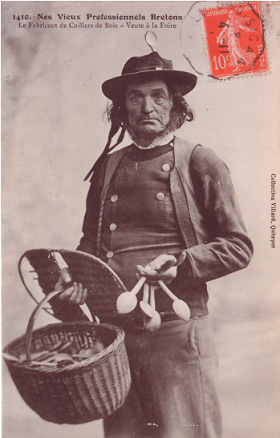 French postcard c. 1935Dedication To all spoon makers, past or present and known or unknown, throughout the world for providing us with basic utensils that may feed our body but are also often beautiful small sculptures that feed our mind and soul. You bring beauty to our lives.
French postcard c. 1935Dedication To all spoon makers, past or present and known or unknown, throughout the world for providing us with basic utensils that may feed our body but are also often beautiful small sculptures that feed our mind and soul. You bring beauty to our lives.  Richard CarlisleNew York2009Pink ivory
Richard CarlisleNew York2009Pink ivory David HurwitzVermont2007CherryContents
David HurwitzVermont2007CherryContents Mark GardnerNorth Carolina2006Ebony (left), dogwood (right), tagua (bowls)Foreword A Gathering of Spoons has been an exciting endeavor for Norman Stevens and a valuable project for wooden spoon makers and future scholars studying the history of twentieth and twenty-first century craft. Norman explains the origins and development of the project but doesnt highlight his own considerable persistence, enthusiasm and dignity. He has clearly enjoyed the search, and the interaction with each participant that has led to many friendships.
Mark GardnerNorth Carolina2006Ebony (left), dogwood (right), tagua (bowls)Foreword A Gathering of Spoons has been an exciting endeavor for Norman Stevens and a valuable project for wooden spoon makers and future scholars studying the history of twentieth and twenty-first century craft. Norman explains the origins and development of the project but doesnt highlight his own considerable persistence, enthusiasm and dignity. He has clearly enjoyed the search, and the interaction with each participant that has led to many friendships.
Though this is solely Normans project, he and his wife Nora have assembled their significant collections with respect and kindness, making numerous friends throughout the craft world. The wooden spoon is among the oldest of our essential functional objects. Contemporary amateur and professional spoon makers throughout the world continue to employ a variety of techniques, tools, skills, and wood species to produce examples of this form, often with inspired variations. A Gathering of Spoons provides a forum for, and elevates the stature of, this seemingly mundane utensil. It is a vehicle for skilled artists to create elegant functional and sculptural objects to be examined and admired. It defines the contemporary wooden spoon as an object worthy of serious attention by collectors and critics.
Norman has had a valued partner in photographer Tib Shaw, who has undertaken the project successfully, understanding the challenge of portraying a long thin object in a single two-dimensional image. This important collection, assembled between 20062011, demonstrates the remarkable variety of form and decoration possible when an everyday object is interpreted with imagination and skill. It provides documentation of early twenty-first century wooden spoonmaking, primarily in the United States, but with examples from more than a dozen other countries as well. Spoons in the collection range from those with functional folk character to highly sophisticated pieces intended as decorative objects. The use of many wood species presents a grand array of color, texture and figure. A Gathering of Spoons also serves as a gathering of spoon makers as we become aware of others practicing our craft, thus providing mutual encouragement, particularly for those who work in isolation from other makers. A Gathering of Spoons also serves as a gathering of spoon makers as we become aware of others practicing our craft, thus providing mutual encouragement, particularly for those who work in isolation from other makers.
We spoon carvers are grateful to Norman for his patronage, understanding of our work, and willingness to give it prominent recognition. Barry Gordon and Norm Sartorius October, 2011 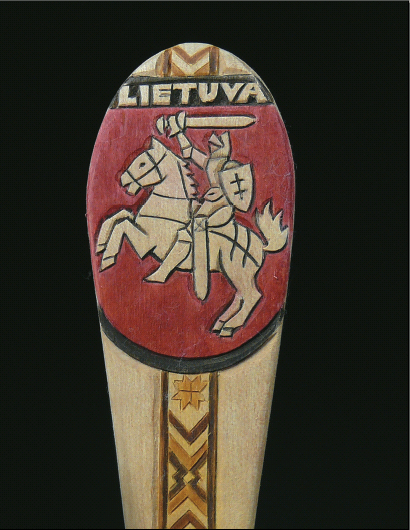 Anatolyi KalinkaLithuania2008BirchThe Education of a Collector I was born and raised in southern New Hampshire. My mother, Ruth, hooked rugs and did intricate needle work. My father, David, had no mechanical skills despite the fact that both his father and grandfather were carpenters who operated a major building-moving firm. My parents were interested in antiques but the only collection they could afford to build was my fathers collection of figural animal creamers, including a number by Royal Bayreuth and Schafer & Vater. In later years, my wife, Nora, and I found pleasure in adding to that collection often on trips to antique stores with my parents.
Anatolyi KalinkaLithuania2008BirchThe Education of a Collector I was born and raised in southern New Hampshire. My mother, Ruth, hooked rugs and did intricate needle work. My father, David, had no mechanical skills despite the fact that both his father and grandfather were carpenters who operated a major building-moving firm. My parents were interested in antiques but the only collection they could afford to build was my fathers collection of figural animal creamers, including a number by Royal Bayreuth and Schafer & Vater. In later years, my wife, Nora, and I found pleasure in adding to that collection often on trips to antique stores with my parents.
I inherited my fathers lack of mechanical skills and, after his death, his collection of creamers. After receiving an M.L.S. (1957) and a Ph.D. (1961) in Library Service from Rutgers University, I began a career as an academic library administrator at Howard University and Rutgers before joining the staff of the University of Connecticut Libraries in 1968. Several years before I retired as Director of University Libraries at UConn in 1994, I began working a few hours a week as a reference librarian through a staff-sharing project. I continued to do so, and, for a number of years thereafter, also worked a few hours a week as a volunteer at the service desk in the newly established Thomas J.
Dodd Research Center. That experience afforded me the opportunity to learn how to effectively use the emerging electronic search services and systems. Those skills have been critical in my spoon gathering efforts. In addition to my academic library administrative career, I also made substantial contributions to the literature of librarianship dealing with library history, library humor, network growth and development, and library administration. I regularly wrote reviews of new publications in librarianship as well as, for many years, reviews of new reference books dealing with antiques and collectibles, crafts, decorative arts and a variety of obscure topics. My career as a collector began in the early 1960s with picture postcards of library buildings.
As that collection grew I added to it a wide variety of other library-related material, including commemoratives and souvenirs and other ephemera.
Next page

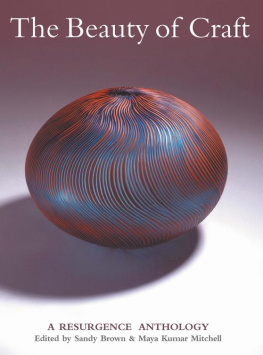


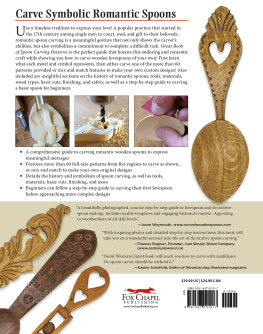


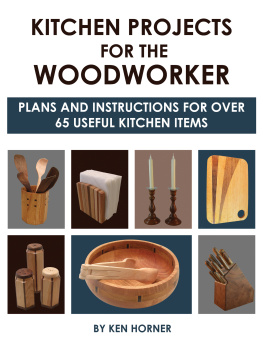

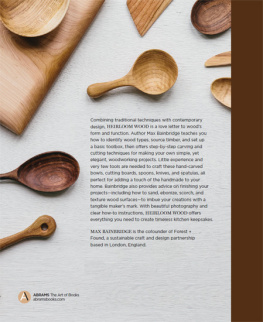

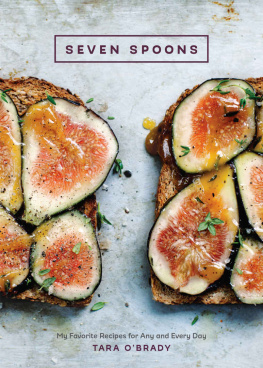
 Trygve AndersonTexas2008BasswoodA Gathering of SpoonsThe Design Gallery of the Worlds Most Stunning Wooden Art Spoons by Norman D. Stevens All rights reserved. No part of this book may be reproduced or transmitted in any form or by any means, electronic or mechanical, including photocopying, recording, or by an information storage and retrieval system, without written permission from the publisher. Norman D. Stevens American Association of Woodturners Cover design: James Goold Design and layout: Maura J. Zimmer ISBN: 978-1-610351-43-0 Printed in China 135798642 Linden Publishing titles may be purchased in quantity at special discounts for educational, business, or promotional use.
Trygve AndersonTexas2008BasswoodA Gathering of SpoonsThe Design Gallery of the Worlds Most Stunning Wooden Art Spoons by Norman D. Stevens All rights reserved. No part of this book may be reproduced or transmitted in any form or by any means, electronic or mechanical, including photocopying, recording, or by an information storage and retrieval system, without written permission from the publisher. Norman D. Stevens American Association of Woodturners Cover design: James Goold Design and layout: Maura J. Zimmer ISBN: 978-1-610351-43-0 Printed in China 135798642 Linden Publishing titles may be purchased in quantity at special discounts for educational, business, or promotional use. French postcard c. 1935Dedication To all spoon makers, past or present and known or unknown, throughout the world for providing us with basic utensils that may feed our body but are also often beautiful small sculptures that feed our mind and soul. You bring beauty to our lives.
French postcard c. 1935Dedication To all spoon makers, past or present and known or unknown, throughout the world for providing us with basic utensils that may feed our body but are also often beautiful small sculptures that feed our mind and soul. You bring beauty to our lives.  Richard CarlisleNew York2009Pink ivory
Richard CarlisleNew York2009Pink ivory David HurwitzVermont2007CherryContents
David HurwitzVermont2007CherryContents Mark GardnerNorth Carolina2006Ebony (left), dogwood (right), tagua (bowls)Foreword A Gathering of Spoons has been an exciting endeavor for Norman Stevens and a valuable project for wooden spoon makers and future scholars studying the history of twentieth and twenty-first century craft. Norman explains the origins and development of the project but doesnt highlight his own considerable persistence, enthusiasm and dignity. He has clearly enjoyed the search, and the interaction with each participant that has led to many friendships.
Mark GardnerNorth Carolina2006Ebony (left), dogwood (right), tagua (bowls)Foreword A Gathering of Spoons has been an exciting endeavor for Norman Stevens and a valuable project for wooden spoon makers and future scholars studying the history of twentieth and twenty-first century craft. Norman explains the origins and development of the project but doesnt highlight his own considerable persistence, enthusiasm and dignity. He has clearly enjoyed the search, and the interaction with each participant that has led to many friendships. Anatolyi KalinkaLithuania2008BirchThe Education of a Collector I was born and raised in southern New Hampshire. My mother, Ruth, hooked rugs and did intricate needle work. My father, David, had no mechanical skills despite the fact that both his father and grandfather were carpenters who operated a major building-moving firm. My parents were interested in antiques but the only collection they could afford to build was my fathers collection of figural animal creamers, including a number by Royal Bayreuth and Schafer & Vater. In later years, my wife, Nora, and I found pleasure in adding to that collection often on trips to antique stores with my parents.
Anatolyi KalinkaLithuania2008BirchThe Education of a Collector I was born and raised in southern New Hampshire. My mother, Ruth, hooked rugs and did intricate needle work. My father, David, had no mechanical skills despite the fact that both his father and grandfather were carpenters who operated a major building-moving firm. My parents were interested in antiques but the only collection they could afford to build was my fathers collection of figural animal creamers, including a number by Royal Bayreuth and Schafer & Vater. In later years, my wife, Nora, and I found pleasure in adding to that collection often on trips to antique stores with my parents.